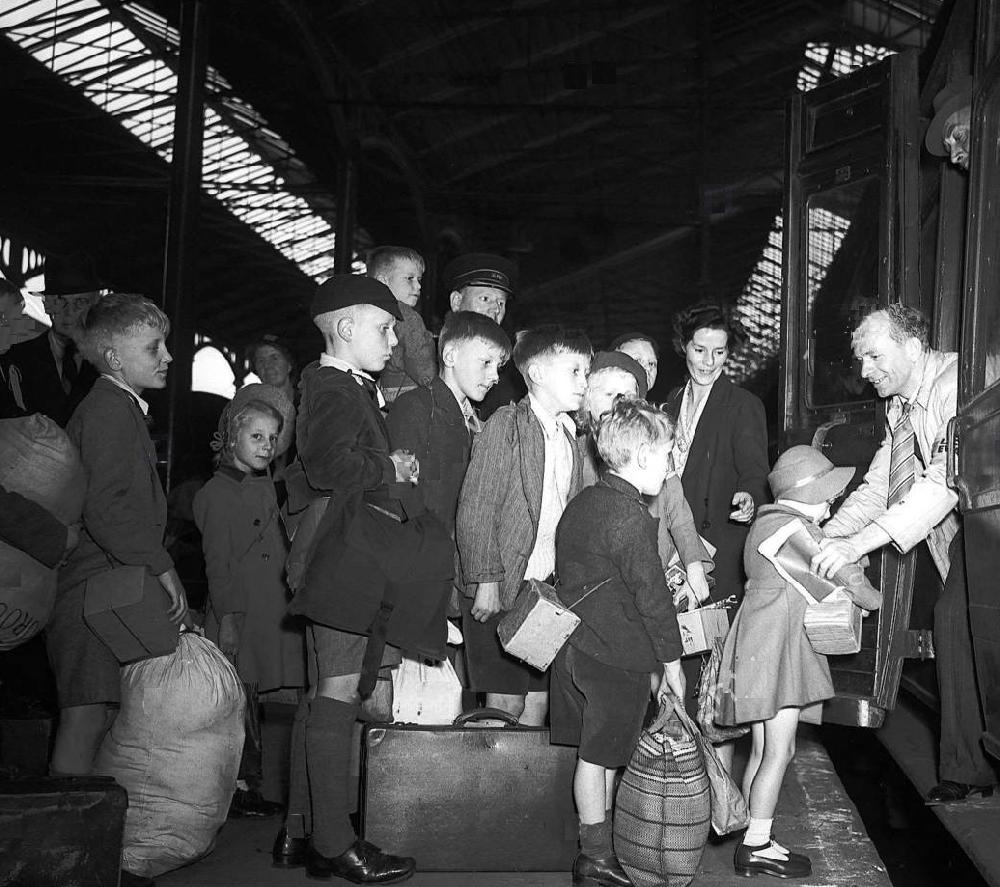
The Third British Evacuation: The Process in London (June-September 1944)

Figure 1.--Here we see Lomdon children being evacuated from Euston Station after the V-1 buzz bombs began falling on London (July 1944). The children were being moved north out of range of the V-1s. The liberation of France and securing the Channel coast ended the V-1 threat, but just as this hapopdned, the German started launching the V-2 ballistic missles (September).
|
|
Hitler had tried to destroy London once and now with the V-weapons he had another opportunity. The result was the third and final British World War II evacuation. The German V-1 attacks began after D-Day (June 1944). The V-1 attacks resulted in a third exodus from London. Some 1.5 million people were evacuated in this third evacuation, some of whom had been evacuated earlier (1939-41). They were conducted more piece-meal than the earlier evacuatins (June-Septemkber). Only 20 percent of these, however, were 'official' evacuees. Most of the evacuees sought to live with family and friends in the countryside and small towns. The evacuation process was officially halted (September) by which time the Allies were in full command of the Channel Coast and the V-1s could no longer reach London. The evacuation was reversed for almost all areas except for London and the vulnerable East coast. The Germans were, however, not done with London. Just has the V-1 attacks ended, the Germans began attacks with the longer range V-2 missle attacks. The V-2s had much greater range than the V-1s. And they had a more powerful warhead. They could devestate an entire city block, but were much more complicated and expensive to produce and this were not available in the numbers that had been planned for the V-1s. Unlike the V-1s they could not be shot down. The British Government did not officially approve people returning to London until a month after the German surrender (June 1945). The billeting program was finally ended (March 1946). There were still some 38,000 people without homes, many from London. A HBC reader writes, "I am of course much too young to know of such things but my parents lived in the East End of London during the Blitz, my oldest sister was born in 1942 and was evacuated with my mother to Norfolk in 1944 to escape the flying bombs."
CIH -- WW II

Navigate the CIH World War II Section:
[Return to Main Third Evacuation page]
[Return to Main German V weapons page]
[Return to Main World War II British evacuations]
[Return to Main World War II European air campaign page]
[About Us]
[Biographies]
[Campaigns]
[Children]
[Countries]
[Deciding factors]
[Diplomacy]
[Geo-political crisis]
[Economics]
[Home front]
[Intelligence]
[POWs]
[Resistance]
[Race]
[Refugees]
[Technology]
[Bibliographies]
[Contributions]
[FAQs]
[Images]
[Links]
[Registration]
[Tools]
[Return to Main World War II page]
[Return to Main war essay page]
Created: 1:28 AM 5/11/2018
Last updated: 1:28 AM 5/11/2018



